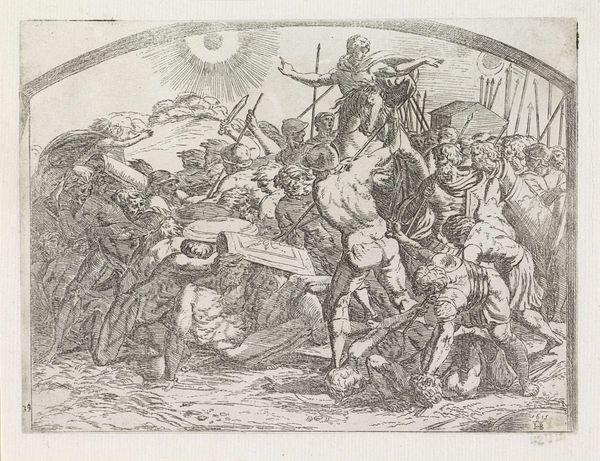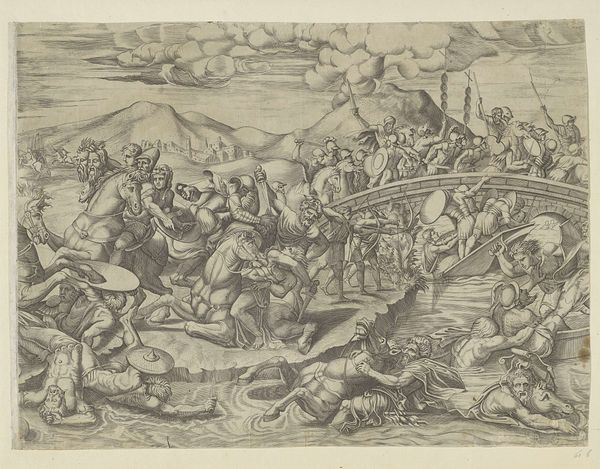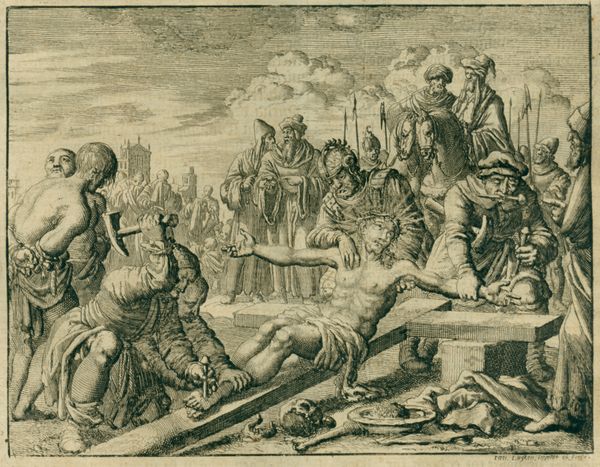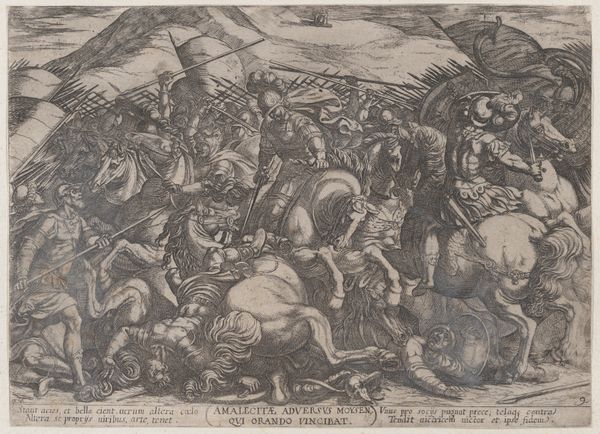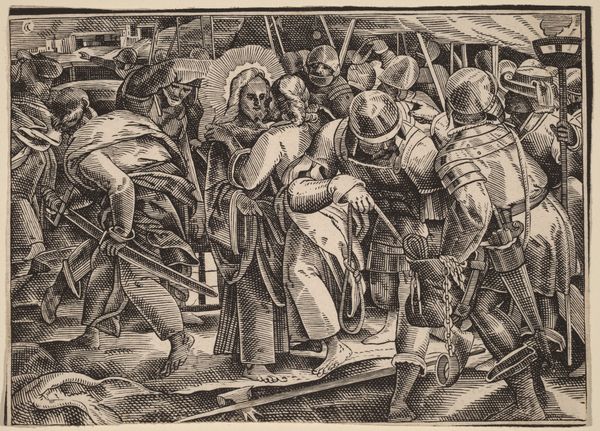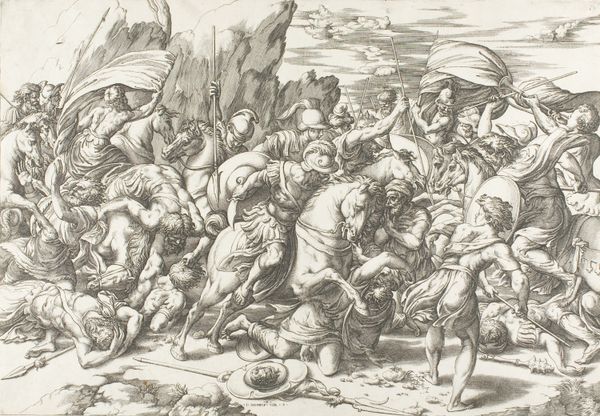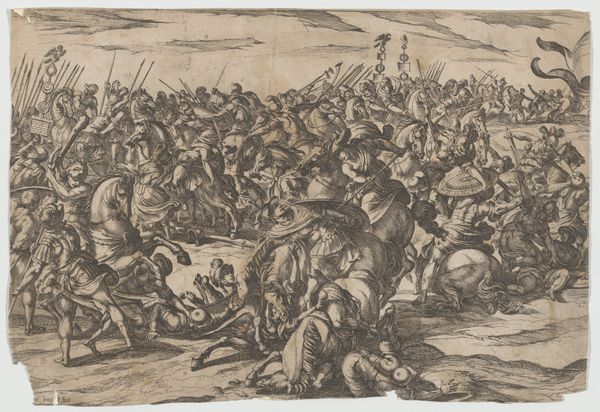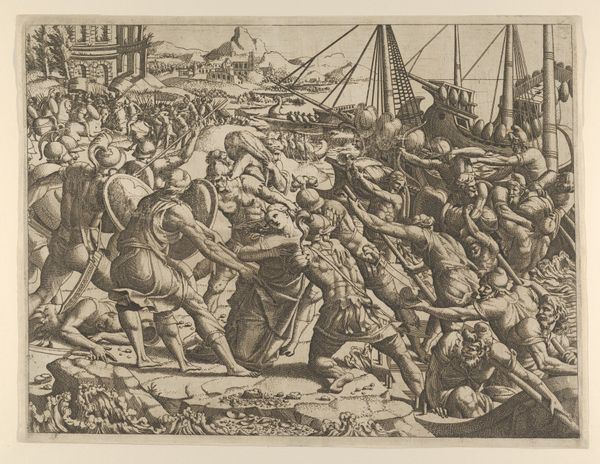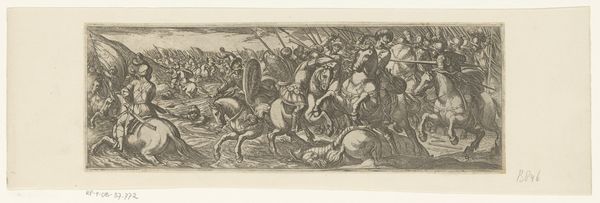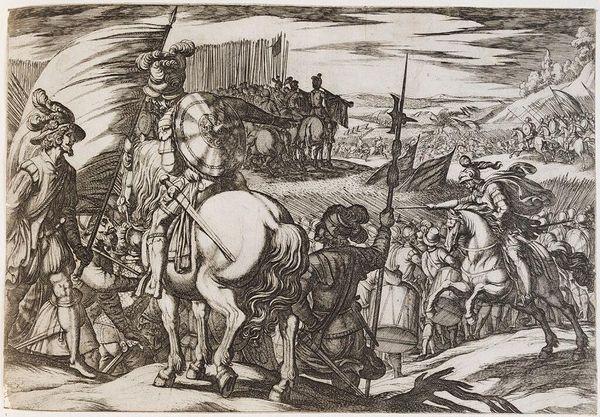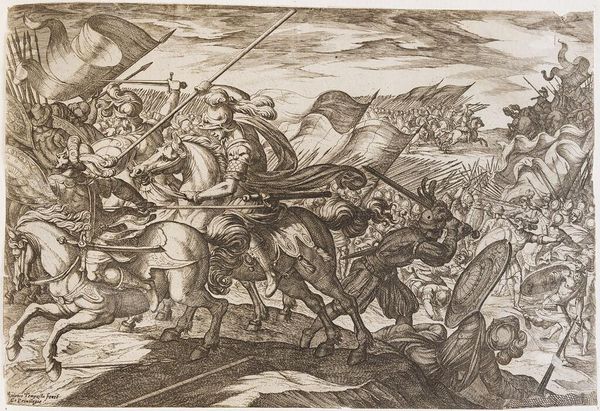
print, engraving
#
narrative-art
#
baroque
# print
#
charcoal drawing
#
figuration
#
genre-painting
#
history-painting
#
engraving
Dimensions: height 225 mm, width 360 mm
Copyright: Rijks Museum: Open Domain
Hendrick Danckerts' 1672 etching captures the gruesome scene of the De Witt brothers' bodies being desecrated. The central motif is the act of mutilation itself. The mob's frenzied gestures and the brutal violation of the corpses. The image evokes the ancient ritual of "sparagmos," the tearing apart of sacrificial victims, seen in Dionysian rites. These acts were intended to purify the community or channel divine power. Here, though, the mob's violence reveals a darker impulse—a primitive, cathartic release of political and personal fury. Consider the image of the flayed human form. We see such depictions in the martyrdom of St. Bartholomew, whose skin became a symbol of spiritual rebirth. But in Danckerts' etching, this motif is twisted. Stripped of their dignity, the De Witts become objects of public desecration. The image reminds us that symbols, no matter how sacred, can be inverted to serve the basest human desires.
Comments
No comments
Be the first to comment and join the conversation on the ultimate creative platform.

